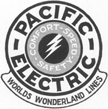
| Passengers: (fare & Transfer) | |||
| Year | Passengers | Car Miles | Revenue |
| 1917 | 7,198,604* | 1,937,828 | $378,623 |
| 1918 | 6,747,305* | 1,872,916 | $359,145 |
| 1920 | 7,068,507* | 1,584,844 | $454,079 |
| 1922 | 7,875,162* | 1,640,130 | $604,666 |
| 1924 | 5,903,490 | 1,012,328 | $451,676 |
| 1926 | 4,954,462 | 832,305 | $385,455 |
| 1928 | |||
| 1930 | |||
| 1932 | Figures unavailable | ||
| 1934 | |||
| 1936 | |||
| 1938 | 4,688,449X | 1,044,451 | $307,425 |
| 1940 | 4,808,601X | 960,464 | $321,872 |
| 1942 | 6,434,506X | 1,004,775 | $443,995 |
| 1944 | 11,507,205X | 1,428,971 | $854,880 |
| 1946 | 13,664,061X* | 1,543,299 | $928,051 |
| 1948 | 8,392,574X | 1,120,142 | $773,288 |
| 1950 | 7,179,300X | 985,744 | $652,059 |
| 1952 | 3,392,060 | 440,507 | $386,732 |
| 1954 | 2,387,263 | 361,084 | $308,376 |
| 1956 | 1,964,147 | 313,304 | $268,965 |
| 1958 | 1,578,841 | 292,512 | $219,981 |
| * Figures include South Pasadena Line | |||
| X Figures include Sierra Vista Line; these two lines were through-routed from March 20, 1938 to October 22, 1950. | |||